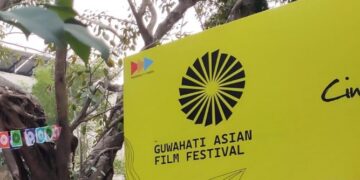Kohima: Nagaland’s flagship tourism event, the Hornbill Festival came to an end on Tuesday with a record-breaking footfall.
According to an official statement by the Nagaland Tourism and Art and Culture department on Wednesday claimed over 2.05 lakh people attended the 10-day festival held at Kisama Heritage Village.
The Hornbill Festival 2024 registered 33 percent increase in footfall compared to the previous year.
This year, over 2.05 lakh people attended the Hornbill Festival, compared to the 1,54,057 visitors last year.
The festival, which ran from December 1 to 10, drew 2,527 international tourists, 54,036 visitors from across India, and a significant number f people from across Nagaland.
More than 50 cultural troupes from various parts of Nagaland and the eight northeastern states showcased their diverse cultural heritage through performances in traditional attire.
This year’s event saw participation from Japan, the U.S., Wales, and Peru as country partners, while Sikkim and Telangana were the partner states.
All the recognized tribes of Nagaland participated in the Hornbill Festival, showcasing their unique customs, attire, and traditions.
The Hornbill Festival, held annually since 1999, pays tribute to the majestic Hornbill, a bird revered by the Naga people.
The festival provided a platform for artisans of Nagaland to display and sell local products, including handlooms, handicrafts, and artworks.
Nagaland Chief Minister Neiphiu Rio expressed gratitude to all participants and stakeholders for making the festival a success.
In a post on X, he said, “The Hornbill Festival is a vibrant celebration of Nagaland’s culture. I thank all Partners, guests, and participants, who helped make the 25th Edition truly special. I hope you take a piece of our culture with you and be our ambassadors.”
Tourism Minister Temjen Imna Along highlighted the festival’s evolution into a platform for networking and growth, stating that it “resonated unity and zeal of the people of the state and beyond.”
Imna Along also acknowledged the contributions of various stakeholders in making the event a success.
The festival features a diverse range of attractions, including traditional performances, local cuisine, handicrafts, and adventure activities.















